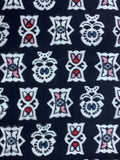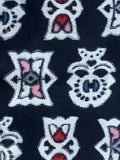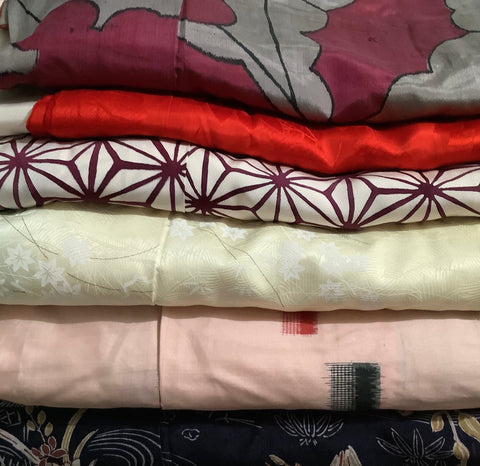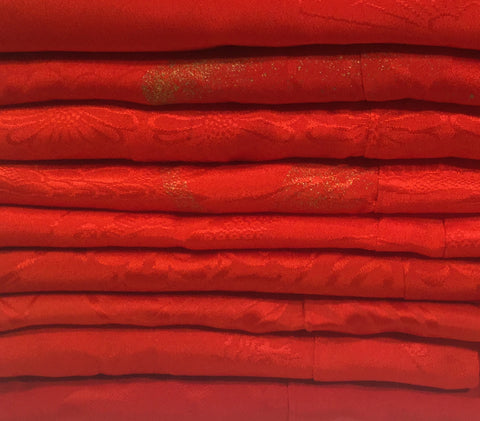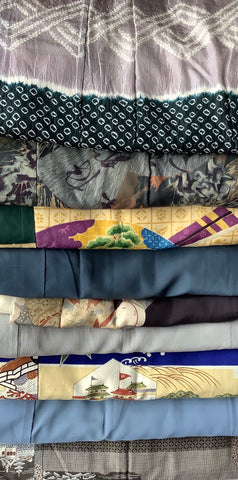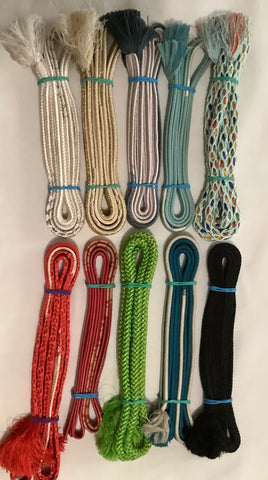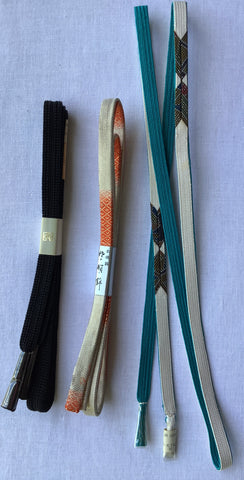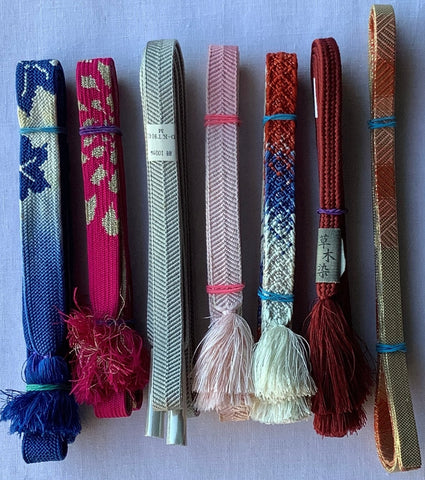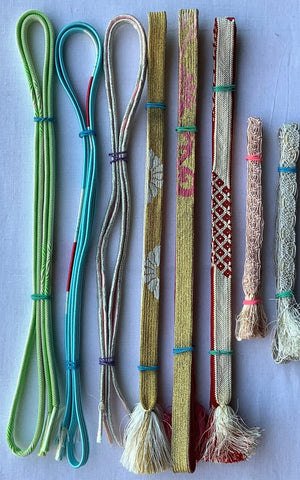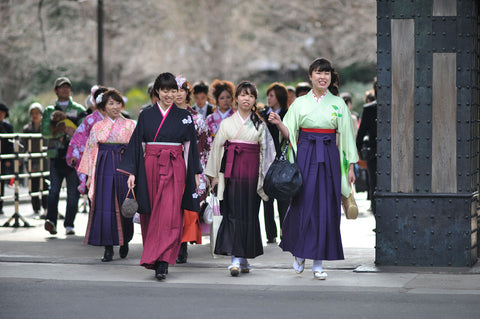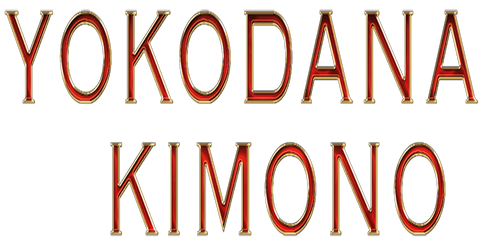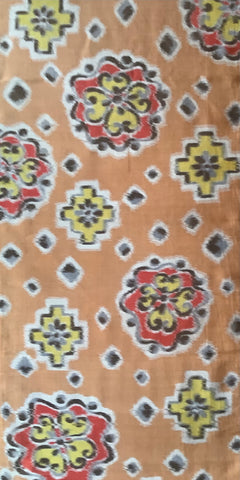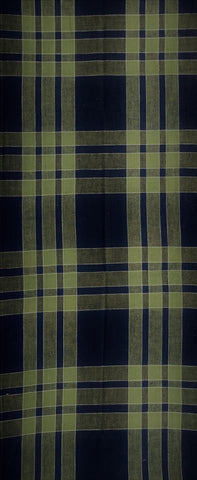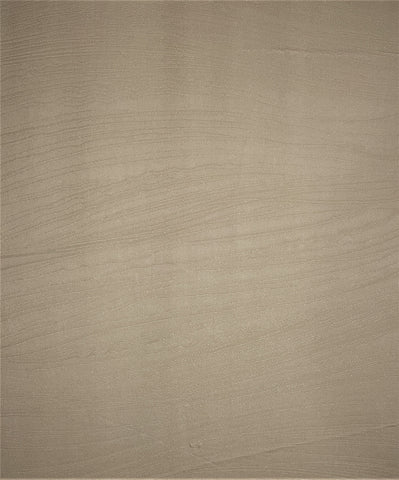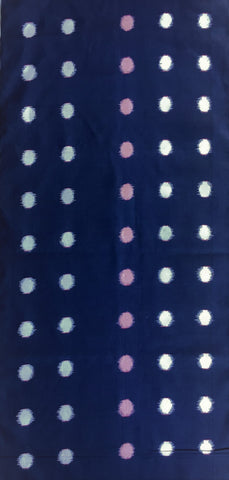6838: 1930s-50s Japanese Meisen Silk Fabric Piece 62in Abstract
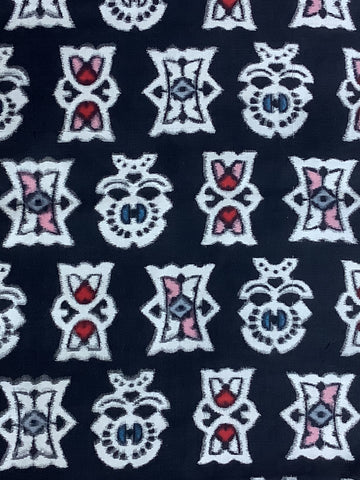
Vintage Japanese Textiles:
1930s-50s Meisen Silk Fabric Piece
(Abstract)
Arai-Hari
Width: 14 inches / 35.56 cm
Length: 62 inches / 157.48 cm
Catalog# 6838:
List Price: US$20.00 per piece
Sale Price: US$10.00
Plus Shipping
![]()
Fabric Motif*: Unusual Japanese design (Western influences, less typically traditional Japanese) in an abstract lateral array of what look like non-traditional crests, each figure being 2.5 inches/6.4 cm tall on a black background; these figures are in even parallel rows and have a variety of perhaps floral -- but decidedly not classic-Japanese designs; The figures are in off-white and other colors used are pink, dark-red, grays and dark blues; As is typical in Meisen, note the impressionistic fuzzy edges; patterns same on both sides; this particular meisen has no sheen and is softer than most of the other meisens we see from this period.
Colors: Reminder that colors and contrast differ on different devices, so please refer to our text color descriptions.
One explanation of such an apparently abstract design for Japanese kimono fabric -- motifs that are fairly non-Japanese in sensibility -- stems from immediate post-war (World War II)1945-1960 Japan: Sometimes we see pieces from this period when Japanese artists and designers felt free to be experimental ("let loose?"), often borrowing from Western abstract art or French Impressionism even in traditional Japanese motifs.
110-GNAG:10Lbs Vintage Japanese Girls Silk Under-Kimono
Regular price $ 75.00 Sale price $ 65.00
110-OBIJIME10: SOLD OUTLot of 10 Used Japanese Vintage Obijime for Kitsuke, DIY, Crafts
Regular price $ 50.00 Sale price $ 35.00
110-OBIJIME3-101:Lot of 3 Deadstock, Never Used Japanese Vintage Obijime CordsTies
Regular price $ 45.00 Sale price $ 35.00
110-OBIJIME7-101:Lot 7 Deadstock & Used Japanese Vintage Obijime Cords Ties
Regular price $ 45.00 Sale price $ 35.00
110-OBIJIME8-101: Lot 8 Deadstock & Used Japanese Vintage Obijime Cords Ties
Regular price $ 45.00 Sale price $ 35.00
6776: 1930s-50s Japanese Meisen Silk 42 in. Piece (AraiHari)
Regular price $ 10.00 Sale price $ 5.00
6838: 1930s-50s Japanese Meisen Silk Fabric Piece 62in Abstract
Regular price $ 20.00 Sale price $ 10.00
6879: 1930s-50s Japanese Cotton Kimono Fabric, 40in.Piece(Arai-Hari)
Regular price $ 15.00 Sale price $ 7.50
6901:1980's Japanese Woman's Nagajuban Fabric, Deadstock Silk, by Yard
Regular price $ 15.00 Sale price $ 7.50
6978:1930s-50s Japanese Meisen Silk 59 in. Piece(AraiHari)
Regular price $ 18.00 Sale price $ 9.00

